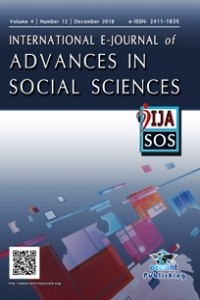TENDENCIES AND PROBLEMS OF THE TRANSPORT INFRASTRUCTURE OF THE CITY AGGLOMERATIONS (CASE-STUDY OF YEKATERINBURG, KAZAN AND PERM)
Abstract
Keywords
city city agglomeration urban transport infrastructure public transport street-road network Ekaterinburg Kazan Perm
References
- Batiss F. (2000). The combined systems of public rail transit. Zheleznye dorogi mira, 8. http://www.css-mps.ru/zdm/08-2000/00909.htm.Capasso A., Giannini G., & Lamedica R. (2014) Eco-friendly urban transport systems. Comparison between energy demands of the trolleybus and tramsystems. Ingegneria Ferroviaria, 69 (4), pp.329-347.Hirano K., Kitao Y. (2009). A study on connectivity and accessibility between tram stops and public facilities WIT Transactions on the Built Environment. 15th International Conference on Urban Transport and the Environment, 107, pp. 247-264.Kołoś A., Taczanowski J. (2016). The feasibility of introducing light rail systems in medium-sized towns in Central Europe. Journal of Transport Geography. 54, pp. 400-413.Lois González, R.C., Otón M.P., & Wolff J.-P. (2013). The tramway between transport policy and tool for urban rehabilitation in certain European countries: Germany, Spain, France and Switzerland Annales de Geographie. 123 (694), pp. 619-643 Macdonald A., Coxo S. (2011). Towards a more accessible tram system in Melbourne - Challenges for infrastructure design. 34th Australasian Transport Research Forum.Merckushev S.A., Popov A.V. (2017). Streetcar networks in transforming urban environment of regional centers of Ural economic region. Geographical bulletin, 3 (42), pp 31–42. doi 10.17072/2079-7877-2017-3-31-42.Naegeli L., Orth H., Weidmann U. (2013). High-quality public transport and promotion of nonmotorized transport - Compromise or complement? Transportation Research Record. (2350), pp . 26-36.Pelyavina I., Sukhanov V. (2018). Modelno govorit. Gubernatoru predstavili novuyu transportnuyu model Permi. Available at: https://www.kommersant.ru/doc/3702772 (accessed 05.08.2018).Pertsik E.N. (1991).The urban geography (geourbanistics). Moscow, Vysshaya shkola Publ.Petrov K. (2018). Business Class had known the details of Perm-II reconstruction and “New Parkoviy” project. Available at: https://www.business-class.su/news/2017/09/25/vokzaly-kvartaly (accessed 05.08.2018).Plakhotich S.A., Chemodanova K.E. (2010). New technologies of transport service of the population in industrial-city agglomeration. Bulletin of the Ural State University of Railway Transport. 2 (6), pp.14–21.Rayskin B.M. (2009). Tram-train car by Alstom in Kassel. Zheleznye dorogi mira, 12 pp 21–28. Rodrigue J., Comtois C., Slack B. (2013). The Geography of Transport Systems 3rd edition. New York: Routledge Publ. Safina D. (2018). Expanding horizons. Program interview of Michael Syutkin first vice premier of government. Available at: https://www.business-class.su/news/2017/10/30/rasshiryaya-gorizonty (accessed 05.08.2018).Tarkhov S.A. (2005). Evolutionary morphology of transport networks. Smolensk, Universum Publ.Vislavskaya E. (2017)Tourists will be able to study the Old-Tatar Sloboda on electric cars.Avaiable at: https://www.kzn.ru/meriya/press-tsentr/novosti/turisty-smogut-izuchat-staro-tatarskuyu-slobodu-na-elektrokarakh/.Vislavskaya E. (2018). Tourists will be able to excurse in Staro-Tatarskaya sloboda by electrocars. Available at https://www.kzn.ru/meriya/press-tsentr/novosti/turisty-smogut-izuchat-staro-tatarskuyu-slobodu-na-elektrokarakh/ (accessed 07.08.2018).Vuchic V. R. (2007). Urban Transit Systems and Technology. Hoboken: John Wiley & Sons Publ.
Abstract
References
- Batiss F. (2000). The combined systems of public rail transit. Zheleznye dorogi mira, 8. http://www.css-mps.ru/zdm/08-2000/00909.htm.Capasso A., Giannini G., & Lamedica R. (2014) Eco-friendly urban transport systems. Comparison between energy demands of the trolleybus and tramsystems. Ingegneria Ferroviaria, 69 (4), pp.329-347.Hirano K., Kitao Y. (2009). A study on connectivity and accessibility between tram stops and public facilities WIT Transactions on the Built Environment. 15th International Conference on Urban Transport and the Environment, 107, pp. 247-264.Kołoś A., Taczanowski J. (2016). The feasibility of introducing light rail systems in medium-sized towns in Central Europe. Journal of Transport Geography. 54, pp. 400-413.Lois González, R.C., Otón M.P., & Wolff J.-P. (2013). The tramway between transport policy and tool for urban rehabilitation in certain European countries: Germany, Spain, France and Switzerland Annales de Geographie. 123 (694), pp. 619-643 Macdonald A., Coxo S. (2011). Towards a more accessible tram system in Melbourne - Challenges for infrastructure design. 34th Australasian Transport Research Forum.Merckushev S.A., Popov A.V. (2017). Streetcar networks in transforming urban environment of regional centers of Ural economic region. Geographical bulletin, 3 (42), pp 31–42. doi 10.17072/2079-7877-2017-3-31-42.Naegeli L., Orth H., Weidmann U. (2013). High-quality public transport and promotion of nonmotorized transport - Compromise or complement? Transportation Research Record. (2350), pp . 26-36.Pelyavina I., Sukhanov V. (2018). Modelno govorit. Gubernatoru predstavili novuyu transportnuyu model Permi. Available at: https://www.kommersant.ru/doc/3702772 (accessed 05.08.2018).Pertsik E.N. (1991).The urban geography (geourbanistics). Moscow, Vysshaya shkola Publ.Petrov K. (2018). Business Class had known the details of Perm-II reconstruction and “New Parkoviy” project. Available at: https://www.business-class.su/news/2017/09/25/vokzaly-kvartaly (accessed 05.08.2018).Plakhotich S.A., Chemodanova K.E. (2010). New technologies of transport service of the population in industrial-city agglomeration. Bulletin of the Ural State University of Railway Transport. 2 (6), pp.14–21.Rayskin B.M. (2009). Tram-train car by Alstom in Kassel. Zheleznye dorogi mira, 12 pp 21–28. Rodrigue J., Comtois C., Slack B. (2013). The Geography of Transport Systems 3rd edition. New York: Routledge Publ. Safina D. (2018). Expanding horizons. Program interview of Michael Syutkin first vice premier of government. Available at: https://www.business-class.su/news/2017/10/30/rasshiryaya-gorizonty (accessed 05.08.2018).Tarkhov S.A. (2005). Evolutionary morphology of transport networks. Smolensk, Universum Publ.Vislavskaya E. (2017)Tourists will be able to study the Old-Tatar Sloboda on electric cars.Avaiable at: https://www.kzn.ru/meriya/press-tsentr/novosti/turisty-smogut-izuchat-staro-tatarskuyu-slobodu-na-elektrokarakh/.Vislavskaya E. (2018). Tourists will be able to excurse in Staro-Tatarskaya sloboda by electrocars. Available at https://www.kzn.ru/meriya/press-tsentr/novosti/turisty-smogut-izuchat-staro-tatarskuyu-slobodu-na-elektrokarakh/ (accessed 07.08.2018).Vuchic V. R. (2007). Urban Transit Systems and Technology. Hoboken: John Wiley & Sons Publ.
Details
| Primary Language | English |
|---|---|
| Journal Section | Articles |
| Authors | |
| Publication Date | January 10, 2019 |
| Submission Date | October 30, 2018 |
| Published in Issue | Year 2018 Volume: 4 Issue: 12 |
Cite
Contact: ijasosjournal@hotmail.com
The IJASOS Journal's site and its metadata are licensed under CC BY
Published and Sponsored by OCERINT International © 2015- 2025

